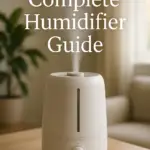Inhaling vinegar steam—especially with diluted apple cider vinegar—is a home remedy some people use for sinus relief. The steam may help loosen mucus and ease congestion, but scientific evidence is limited. Overuse or high concentrations of vinegar can irritate your airways. Always dilute and use with caution—or consider safer, proven alternatives.
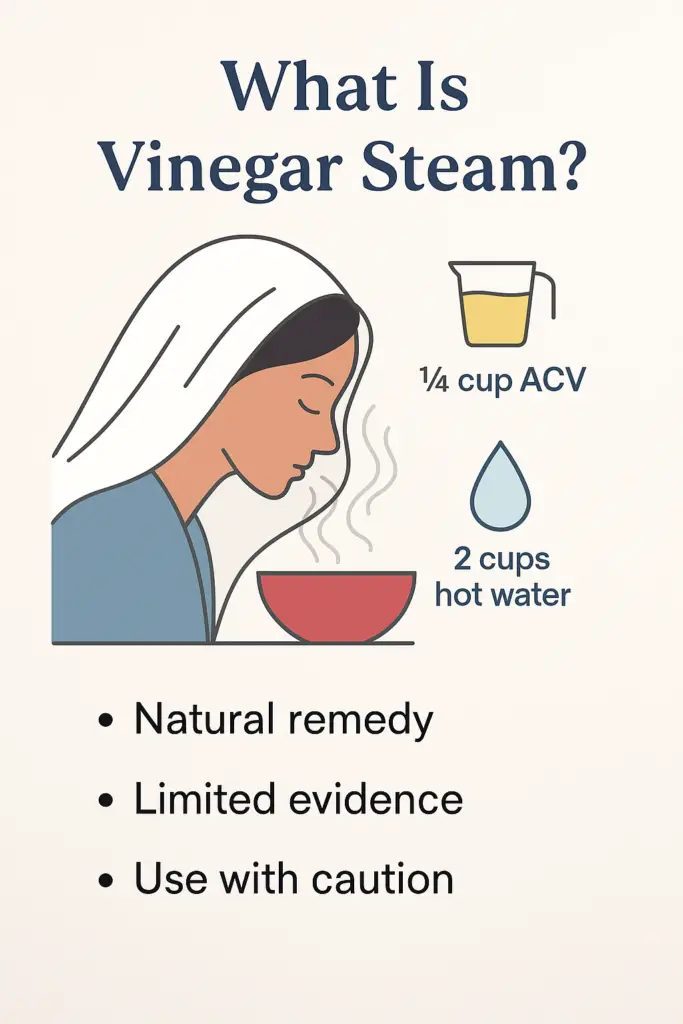 Why People Inhale Vinegar Steam for Sinus Relief
Why People Inhale Vinegar Steam for Sinus Relief
Every year, like clockwork, sinus pressure creeps in with the changing weather. Dry indoor air, cold temperatures, and stuffy noses drive people to try just about anything for relief—and one old-school remedy that still makes the rounds is vinegar steam inhalation.
It’s simple: boil some water, add apple cider vinegar, and breathe in the vapor under a towel. Some people swear it breaks up congestion, soothes sinus pain, and clears the head. Others warn it can burn your throat or irritate your lungs if you’re not careful.
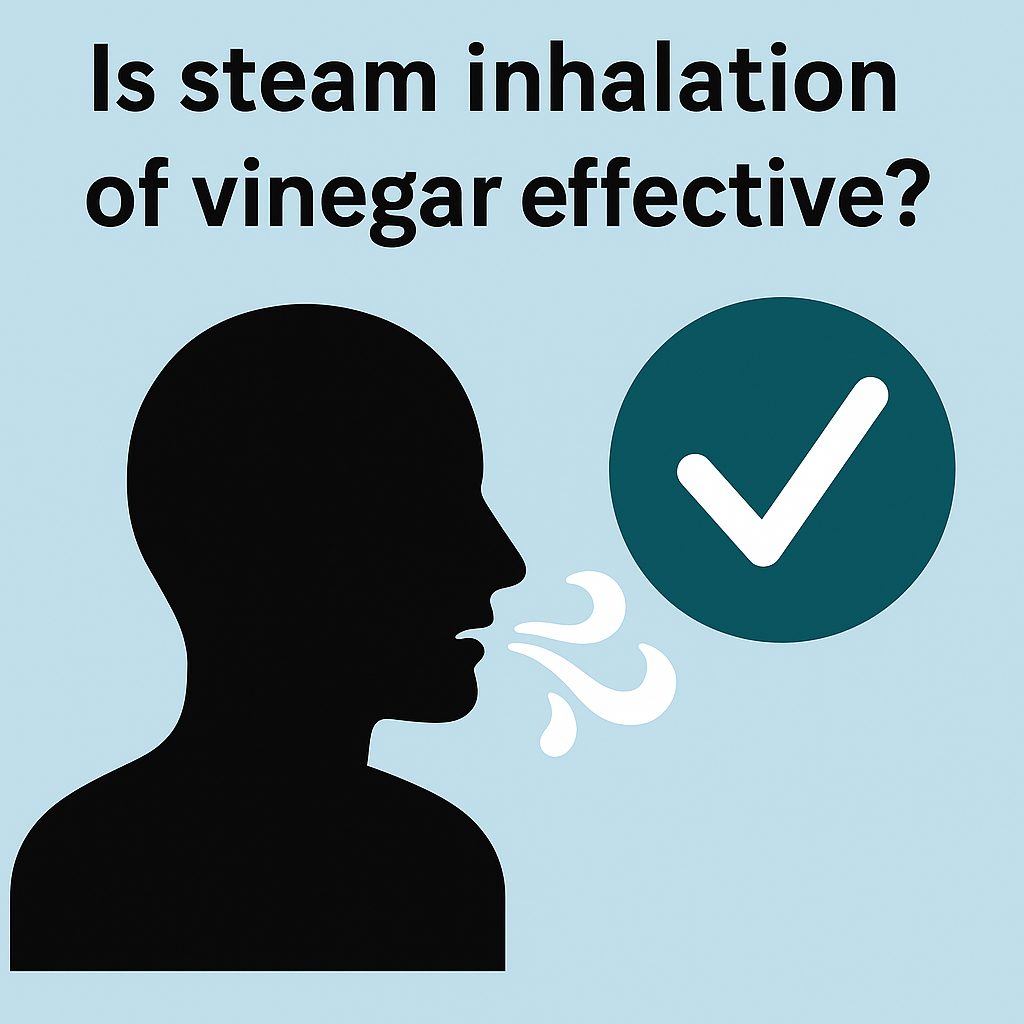 The truth lies somewhere in between. Steam itself can help moisten nasal passages and loosen mucus, but adding vinegar introduces a different set of benefits—and risks. It’s important to understand what vinegar does (and doesn’t do) before trying this remedy.
The truth lies somewhere in between. Steam itself can help moisten nasal passages and loosen mucus, but adding vinegar introduces a different set of benefits—and risks. It’s important to understand what vinegar does (and doesn’t do) before trying this remedy.
And if you’re turning to steam for sinus comfort, a proper humidifier might be a safer and more consistent long-term option. Here’s how to choose the right humidifier for your needs.
 What’s in Apple Cider Vinegar That Might Help?
What’s in Apple Cider Vinegar That Might Help?
Apple cider vinegar isn’t just for salad dressing. It’s been a staple in home remedies for generations, often credited with antibacterial, anti-inflammatory, and even immune-supporting properties.
The main compound responsible for its reputation is acetic acid. Acetic acid is a natural antimicrobial that has shown the ability to reduce certain bacteria on surfaces and in wounds. One study published in the National Institutes of Health found that acetic acid could help eliminate bacteria in controlled environments. But that doesn’t mean breathing it in will have the same effect on your sinuses.
Apple cider vinegar also contains trace vitamins and minerals like:
- Vitamin A, B1, B2, B6, and E
- Magnesium
- Potassium
- Calcium
These nutrients may support immune health, but they’re typically more effective when consumed—not inhaled. There’s no solid clinical evidence showing that breathing in apple cider vinegar delivers any measurable benefit to your sinuses.
Still, that hasn’t stopped fans of natural remedies from using it. But if you’re going to try it, you need to know how to do it safely—and why not all vinegar is created equal.
 Is It Safe to Inhale Vinegar Steam?
Is It Safe to Inhale Vinegar Steam?
Even though apple cider vinegar is natural, that doesn’t mean it’s always safe to inhale—especially in vapor form. When you boil vinegar, the acetic acid becomes airborne, and inhaling it in large amounts or at high concentrations can irritate your nasal passages, lungs, and eyes.
For people with asthma, allergies, or sensitive airways, it may trigger coughing or worsen respiratory symptoms. Even small amounts of vinegar vapor can cause discomfort if you’re not careful.
Even Healthline cautions that while vinegar may have surface-level disinfectant properties, it’s not meant to be inhaled. Here’s what they say about vinegar’s limitations as a disinfectant.
To help you decide whether vinegar steam is right for you, here’s a simple breakdown:
| ✅ Might Be Helpful | ⚠️ Use With Caution | ❌ Avoid If… |
|---|---|---|
| Mild sinus pressure or congestion | You have mild respiratory sensitivity | You have asthma, COPD, or chronic lung issues |
| You tolerate steam well | You notice scratchiness or burning | You’re under 12 or elderly |
| You dilute vinegar properly | You try it more than once a day | You’re already using other medicated inhalants |
The takeaway? Don’t assume it’s harmless just because it’s natural. Vinegar steam might offer short-term relief for some, but it’s definitely not for everyone—and it’s no replacement for clinically tested sinus treatments.
 How to Safely Inhale Apple Cider Vinegar Steam
How to Safely Inhale Apple Cider Vinegar Steam
If you’ve weighed the pros and cons and still want to give vinegar steam a try, it’s important to do it the right way. A little goes a long way—and your goal should be comfort, not burning your sinuses out.
✅ What You’ll Need
- A medium-sized pot or heat-safe bowl
- 2 cups of water
- ¼ cup apple cider vinegar (not white vinegar!)
- A towel large enough to drape over your head
🥣 Step-by-Step Instructions
- Bring water to a boil, then remove from heat.
- Add apple cider vinegar to the water and stir gently.
- Place the bowl on a stable surface like a kitchen table.
- Lean over the bowl, keeping your face 8–12 inches above it.
- Drape the towel over your head to form a “steam tent.”
- Close your eyes and breathe gently through your nose for 2–3 minutes.
- Take breaks if needed—don’t push through discomfort.
⚠️ Safety Tips
- Start slow. The first session should be short—under 3 minutes.
- Never inhale boiling water directly. Let it cool for a minute.
- Don’t use more vinegar than recommended.
- Stop immediately if you feel a burning sensation, dizziness, or coughing.
- Do not try this with white vinegar. It’s more acidic and lacks the beneficial nutrients found in ACV.
The first time I tried this, I underestimated how strong it would smell. I only lasted about two minutes—but it did loosen things up. The trick is not overdoing it.
 Should You Add Vinegar to a Humidifier?
Should You Add Vinegar to a Humidifier?
You’ve probably heard this one: “Just add vinegar to your humidifier—it’ll clean the air while it runs!” Sounds easy enough. But unfortunately, it’s not that simple—and not a good idea.
While vinegar is excellent for cleaning your humidifier when it’s turned off, running it through the machine while it’s operating can cause more harm than good.
⚠️ Reasons to Skip Vinegar While the Humidifier is Running
🧪 1. Acidic Damage: Vinegar’s acetic acid can corrode internal parts, especially metal components. That can lead to leaks, performance issues, and voided warranties.
🌫 2. Irritating Vapors: Even small amounts of vinegar in the air can irritate your eyes, lungs, and throat—especially if you or someone in your household has asthma, allergies, or sensitive airways.
🧱 3. Harder-to-Clean Buildup: Ironically, while vinegar can dissolve mineral buildup, frequent use can cause a white, crusty residue to form inside the humidifier, making deep cleaning harder.
🚫 4. It Doesn’t Reach Every Part: Running vinegar through the water tank doesn’t clean narrow crevices, fan blades, or filters. Manual cleaning is still needed.
✅ Better Alternative: Clean It Properly, Then Use Distilled Water
Want to keep your humidifier working well and your air clean?
- Clean your humidifier with vinegar once a week (while off)
- Rinse it thoroughly
- Refill it with distilled or filtered water only
- Replace wicks and filters as needed
💡 Tip: Here’s how to choose the right type of humidifier for your home.
Alternatives That Are Backed by Science
If vinegar steam feels too risky—or just isn’t working for you—there are safer, better-supported options to clear your sinuses. These methods are used by medical professionals and supported by research.
💧 1. Saline Nasal Rinse (Neti Pot or Spray)
Rinsing your sinuses with sterile saline helps flush out mucus, allergens, and irritants. It’s safe, inexpensive, and highly effective—just make sure to use distilled or sterile water.
🌿 2. Steam with Eucalyptus or Menthol
Plain steam can help, but adding essential oils like eucalyptus or menthol may further open the airways. These ingredients are common in vapor rubs and over-the-counter sinus products.
🧊 3. Warm Compresses
A warm washcloth placed on your face can reduce sinus pressure and help drainage. This is especially helpful for sinus-related headaches and facial tension.
💨 4. Humidifiers (Used Properly!)
A clean humidifier adds moisture to dry air, which helps prevent your nasal passages from drying out and inflaming. Just be sure it’s functioning correctly—if not, here’s how to fix common humidifier issues.
🥤 5. Hydration + Rest
Drinking enough fluids and sleeping with your head slightly elevated can support natural drainage and recovery. It’s simple advice, but it really works when your sinuses are inflamed.
The bottom line: You don’t have to rely on risky or unproven remedies. These options are widely used, generally safe, and often more effective in the long run.
Mini FAQ: What People Want to Know
❓ Can vinegar steam cure a sinus infection?
No. It might offer short-term relief by loosening mucus, but it won’t treat a bacterial infection. See a doctor if your symptoms last more than 10 days or include fever and colored discharge.
❓ Can I do vinegar steam every day?
No. Daily use increases the risk of airway irritation. Limit it to once a day, and stop if you feel any discomfort or burning.
❓ Can children use vinegar steam?
Definitely not. The strong vapor and risk of burns make it unsafe for children. Use a pediatric-safe humidifier instead.
❓ Is Bragg’s vinegar better than store brands?
Bragg’s contains “the mother”—enzymes and proteins that natural health users often prefer. While there’s no proof it’s more effective for steaming, many people trust it for natural remedies.
❓ Can I use white vinegar instead?
No. White vinegar is more acidic and lacks the beneficial nutrients of apple cider vinegar. It’s best reserved for cleaning—not inhaling.
Final Thoughts: Should You Try It?
Inhaling apple cider vinegar steam is one of those home remedies that walks a fine line between old-school wisdom and wishful thinking. For some, it may offer a little relief; for others, it might do more harm than good.
Steam alone can definitely help loosen mucus and soothe sinus pressure. Adding vinegar may introduce some antimicrobial benefit, but there’s no research proving it helps when inhaled—and plenty of risk if overused.
If you’re curious, there’s no harm in trying it cautiously—just don’t overdo it. Dilute the vinegar, start with short sessions, and always listen to your body. And if it causes burning or irritation, stop right away.
The good news is, you’ve got options. Saline rinses, warm compresses, and proper humidifier use are safer and often more effective ways to manage sinus problems—especially if they’re ongoing.
At the end of the day, every body is different. Sometimes what helps one person might not work for the next. Stay informed, start slow, and choose what works best for your health.
A little dab will do you.


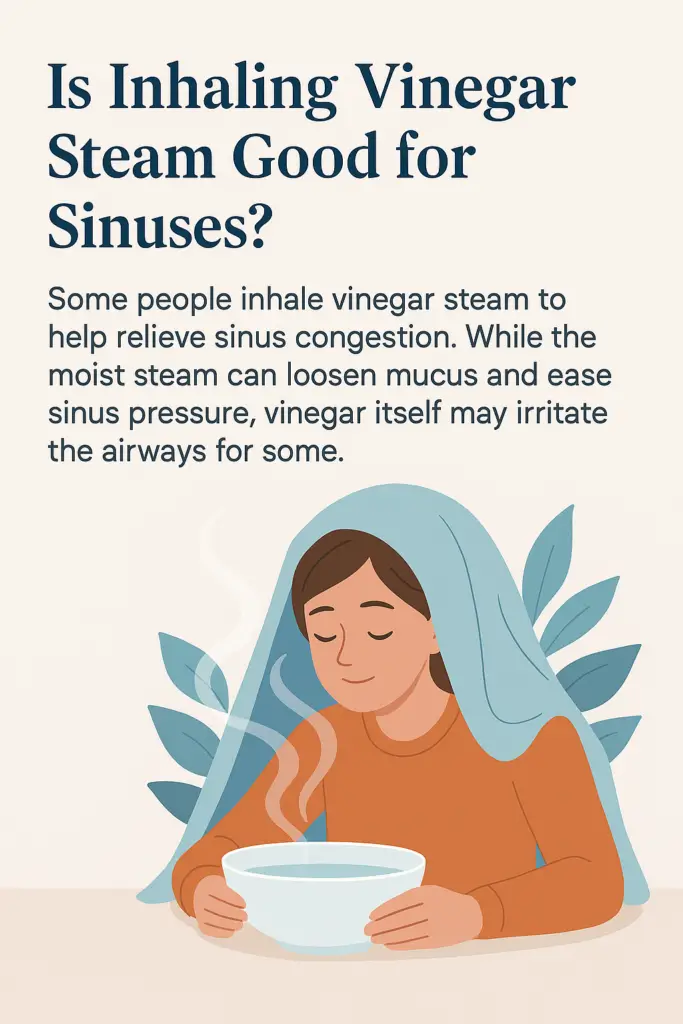 What’s in Apple Cider Vinegar That Might Help?
What’s in Apple Cider Vinegar That Might Help?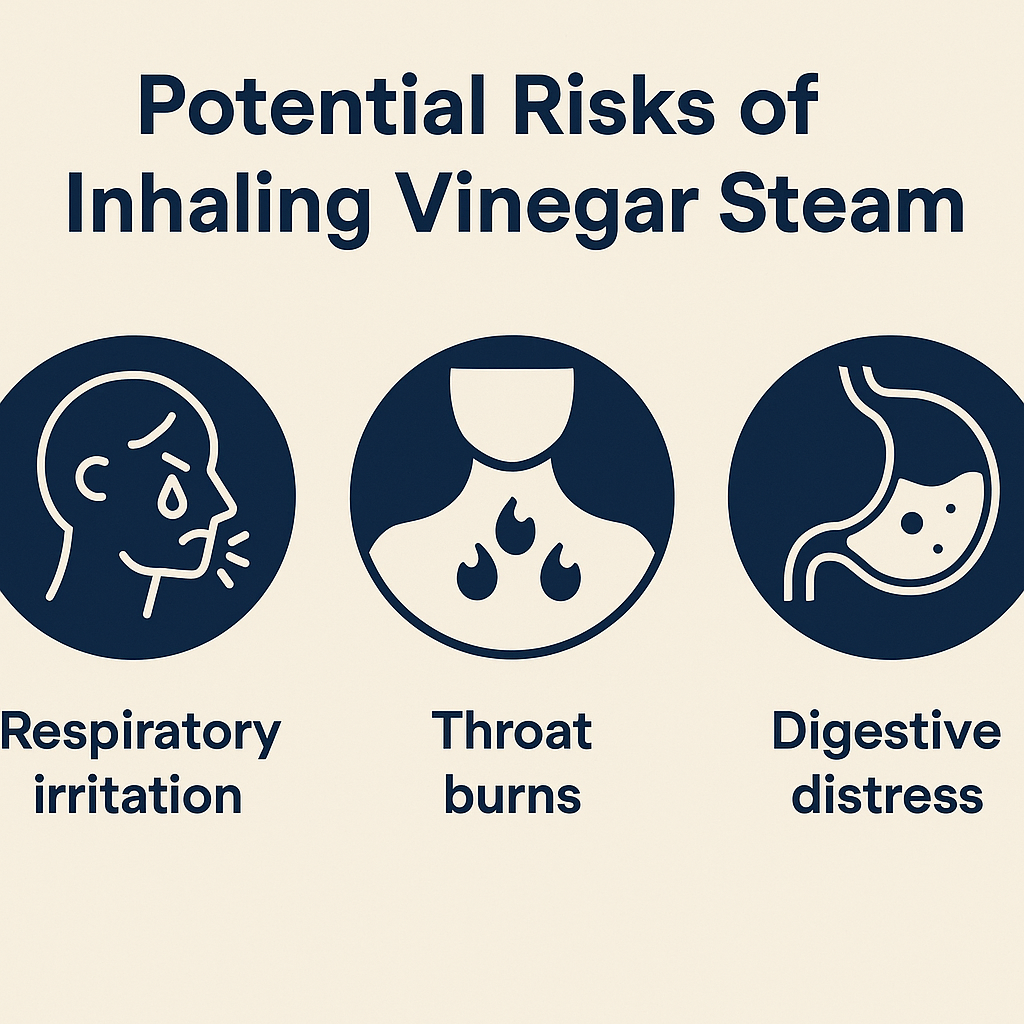 Is It Safe to Inhale Vinegar Steam?
Is It Safe to Inhale Vinegar Steam?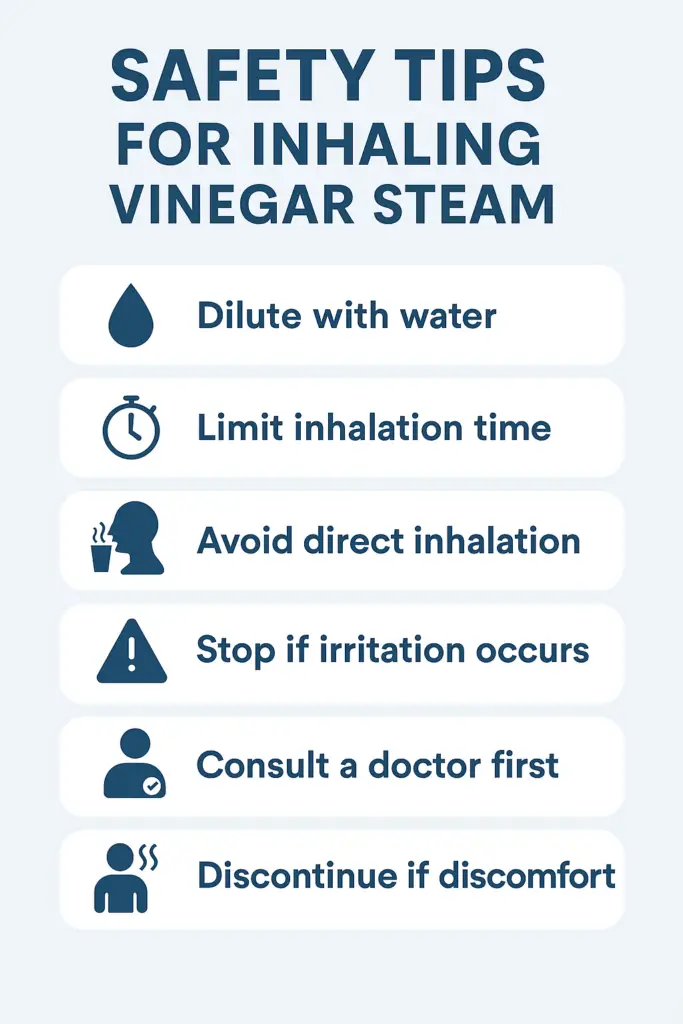 How to Safely Inhale Apple Cider Vinegar Steam
How to Safely Inhale Apple Cider Vinegar Steam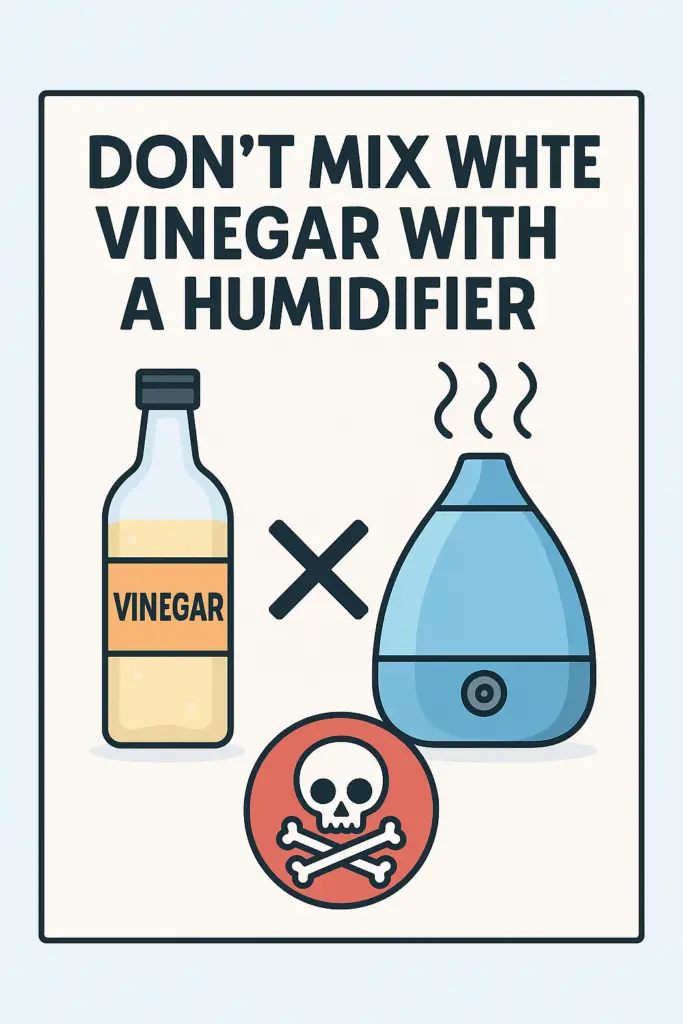 Should You Add Vinegar to a Humidifier?
Should You Add Vinegar to a Humidifier?


